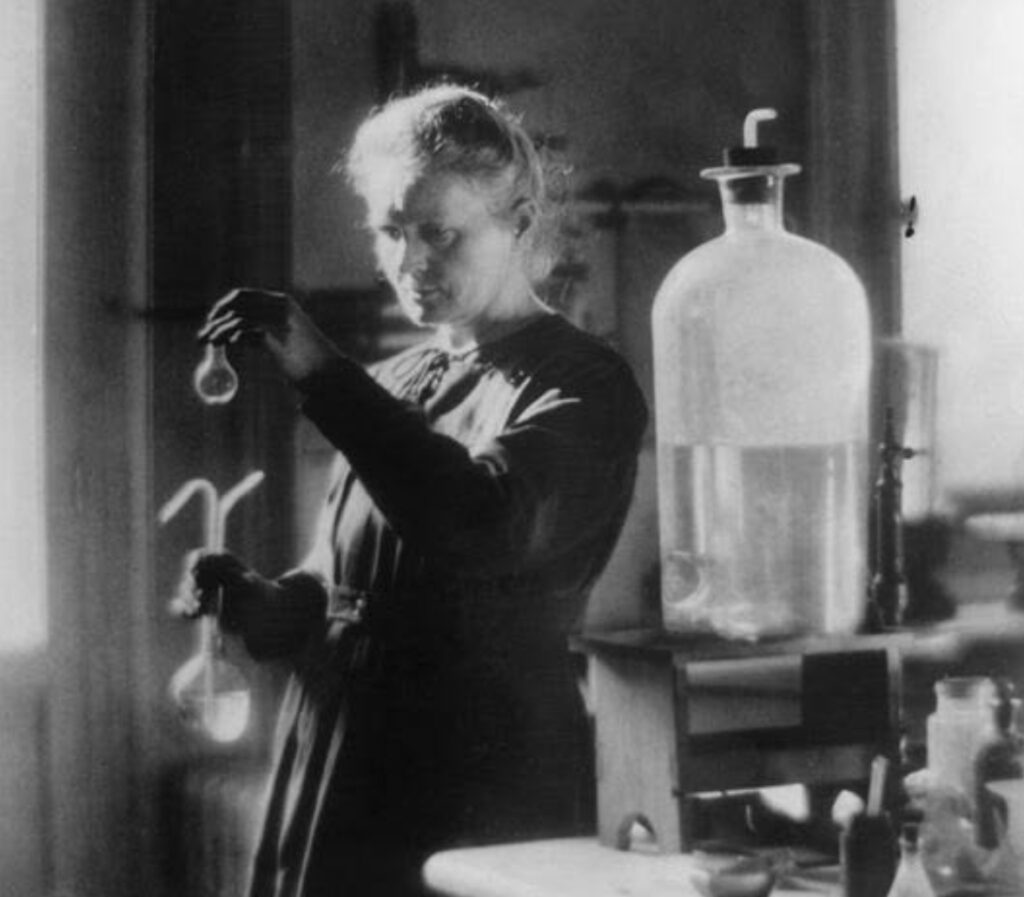On this #InternationalWomensDay, we celebrate the extraordinary life and achievements of Marie Skłodowska Curie, a trailblazing scientist whose groundbreaking work not only transformed the field of physics and chemistry but also opened doors for generations of women in science.
Born in Warsaw, Poland, in 1867, Skłodowska Curie’s journey was defined by resilience, intellectual brilliance, and an unwavering commitment to scientific discovery. She was not only the first woman to win a Nobel Prize, but also the first person ever to win two Nobel Prizes in different scientific fields, an achievement that remains unmatched. Her contributions to the study of radioactivity and her discovery of the elements polonium and radium revolutionized modern science and medicine, paving the way for life-saving treatments for cancer.
As we reflect on her remarkable legacy, we delve into the challenges she overcame, her scientific breakthroughs, and the lasting impression of her work on today’s world.
Early Life and Education: A Struggle for Knowledge
Marie Skłodowska Curie was born in a time when educational opportunities for women were severely limited. In her homeland of Poland, under Russian occupation, women were not elicited to attend universities. However, Marie’s passion for learning was nurtured by her parents, both educators, who instilled in her a deep appreciation for science and mathematics.
Determined to further her education, she secretly attended the Flying University, an underground institution that provided education to Polish women. However, realizing that her scientific ambitions could not be fulfilled in Poland, she moved to Paris in 1891 to study at the Sorbonne. Despite struggling with poverty and the challenges of adapting to a new language and culture, she excelled in her studies, earning degrees in physics and mathematics.
Groundbreaking Scientific Discoveries
Marie’s scientific journey took a decisive turn when she met and married Pierre Curie, a fellow physicist, in 1895. Their partnership led to some of the most significant discoveries in modern science.
In the late 19th century, the field of atomic science was still in its infancy. Inspired by the work of Henri Becquerel, who discovered that uranium emitted mysterious rays, Marie began investigating the phenomenon of radioactivity—a term she herself coined. Her research led her to discover that thorium exhibited similar properties.
Marie and Pierre’s tireless work eventually led to the discovery of two new elements:
• Polonium (1898) – Named after Poland, Marie’s homeland, as a symbol of her patriotism.
• Radium (1898) – A highly radioactive element with remarkable properties.
Their work not only expanded our understanding of atomic physics but also laid the foundation for nuclear energy and medical applications.
Nobel Prizes and Breaking Barriers
Marie Skłodowska Curie made history in 1903, when she, along with Pierre Curie and Henri Becquerel, was awarded the Nobel Prize in Physics for their discoveries in radiation. This recognition made her the first woman to ever receive a Nobel Prize—a groundbreaking achievement at a time when the scientific community was overwhelmingly male-dominated.
Tragically, in 1906, Pierre Curie passed away in a tragic accident. Despite her immense grief, Marie continued her research and took over Pierre’s professorship at the University of Paris, becoming the first female professor in the university’s history.
In 1911, she won her second Nobel Prize, this time in Chemistry, for her discovery and isolation of pure radium. This unprecedented feat made her the first and only person to win Nobel Prizes in two different scientific fields, cementing her bequest as one of the greatest scientists of all time.
Impression Medicine: The Birth of Radiotherapy
Beyond her contributions to physics and chemistry, Marie’s work had profound implications for medicine, particularly in the treatment of cancer. She pioneered the use of radium in medical therapies, leading to the development of radiotherapy, which is still used today to treat various forms of cancer.
During World War I, she applied her expertise to practical humanitarian efforts, developing mobile X-ray units, known as “Little Curies,” to help diagnose injuries on the battlefield. She personally trained medical staff and traveled to the front lines, demonstrating her unwavering dedication to using science for the betterment of humanity.
Challenges and Discrimination
Despite her achievements, Marie Skłodowska Curie faced significant discrimination as a woman in science. She was often denied proper recognition, faced resistance from the scientific establishment, and was subjected to unwarranted scrutiny over her personal life. Even after winning her second Nobel Prize, she was excluded from the French Academy of Sciences—a clear reflection of the biases of the time.
Yet, she never allowed these obstacles to deter her from her work. Her perseverance paved the way for future generations of women in STEM (Science, Technology, Engineering, and Mathematics), demonstrating that intellectual merit transcends gender barriers.
Marie Skłodowska Curie’s legacy extends far beyond her own lifetime. She established the Radium Institute (now the Curie Institute) in Paris, a leading research center dedicated to studying radioactivity and its applications in medicine. Her daughter, Irène Joliot-Curie, followed in her footsteps, winning a Nobel Prize in Chemistry in 1935 for her work in artificial radioactivity.
Her pioneering discoveries continue to influence modern science, from nuclear energy to medical advancements in oncology. Today, the Curie Institutes in Paris and Warsaw remain at the forefront of cancer research and treatment.
Honoring Marie Curie’s Contributions
Marie Skłodowska Curie’s influence extends beyond science—she became a symbol of determination, resilience, and intellectual excellence. Her achievements serve as an enduring inspiration for women and girls worldwide who aspire to pursue careers in STEM.
As we celebrate International Women’s Day, let us honor Marie Curie’s legacy by:
• Encouraging young women and girls to explore careers in science and technology.
• Supporting initiatives that promote gender equality in STEM fields.
• Recognizing and celebrating the contributions of women scientists throughout history.
Marie Skłodowska Curie once said:
“Nothing in life is to be feared, it is only to be understood. Now is the time to understand more, so that we may fear less.”
Her relentless pursuit of knowledge changed the world, proving that science has no gender—only boundless curiosity and the drive to discover.
Join us in celebrating her remarkable life and achievements by learning more about her work: Curie Institute.
No comments yet.








